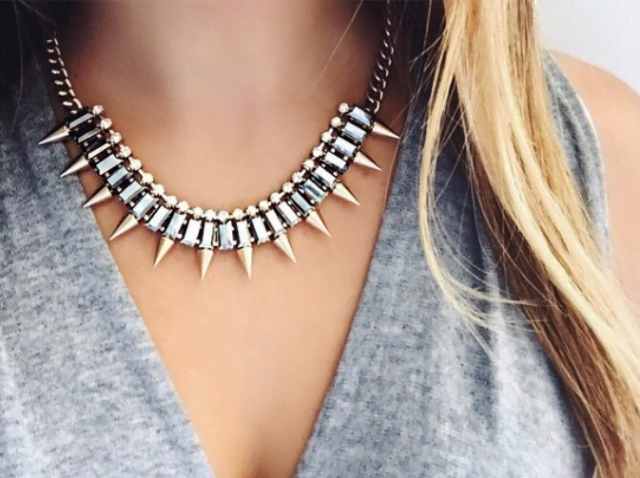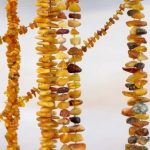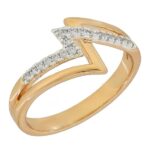Handmade jewelry has seen a surge in popularity, and for good reason. The unique charm and personal touch it brings to an outfit cannot be replicated by mass-produced accessories.
Among these handmade treasures, beaded jewelry bracelets stand out as versatile and eye-catching pieces that can elevate any ensemble. If you have ever been captivated by the intricate patterns and vibrant colors of beaded bracelets, then learning how to make your own will not only provide satisfaction but also allow you to express your creativity.
Creating beaded jewelry bracelets offers a wonderful opportunity to explore your artistic side while crafting something meaningful and beautiful. Whether you are a seasoned crafter or just starting out, making your own bracelets allows you to experiment with different bead combinations, colors, textures, and styles to create one-of-a-kind designs that reflect your personality.
With just a few essential tools and materials, along with some basic techniques, you can embark on this creative journey of making beaded jewelry bracelets yourself. In this article, we will guide you through the process step-by-step starting from choosing the right beads for your design all the way to finishing touches and caring for your bracelet.
Join us as we dive into the world of handmade beaded jewelry bracelets and discover the joy of creating stunning accessories that truly speak to who you are.
Tools and Materials Needed for Making Beaded Jewelry Bracelets
Gathering the Essential Tools
To get started on making beaded jewelry bracelets, it is important to have the right tools at your disposal. Here is a comprehensive list of essential tools that every beginner should have:
- Pliers: Round-nose pliers, chain-nose pliers, and flat-nose pliers are all necessary for various tasks such as bending wire, opening and closing jump rings, and holding components securely.
- Wire Cutters: These are crucial for cutting wire or stringing material to the desired length, ensuring a clean and precise cut.
- Bead Mat: A soft and non-slip bead mat helps prevent beads from rolling away while you work and provides a stable surface to create your bracelet design.
- Crimp Tool: This specialized tool is used to secure crimp beads onto stringing material, creating loops or clasps for added security.
- Measuring Tape: An accurate measuring tape or ruler comes in handy for sizing your bracelet correctly and determining the overall length.
Choosing the Right Materials
In addition to the tools mentioned above, it is also necessary to gather suitable materials before starting your beaded jewelry project. Here are some common materials you might need:
- Beads: The type of beads you choose will greatly influence the overall look and feel of your bracelet. Consider using glass beads for their variety in color and shape, crystal beads for their sparkle, gemstone beads for their natural beauty, or seed beads for delicate designs.
- Stringing Material: Depending on your preference and design requirements, there are several options available – thread (nylon or silk), beading wire (tiger tail or flexible beading wire), or stretch cord (for easy slip-on bracelets).
- Clasps: A clasp is essential for securing your bracelet around the wrist. There are various types of clasps to choose from, including lobster clasps, toggle clasps, or magnetic clasps.
- Findings and Components: These include jump rings, crimp beads, bead caps, spacers, and any other decorative or functional elements you wish to incorporate into your design.
When selecting materials for your bracelet, it is important to consider the overall design aesthetic you want to achieve, the durability required for daily wear, and the comfort level of the wearer. Experimenting with different combinations of beads and materials will allow you to create unique and visually appealing bracelets.
Where to Find Tools and Materials
Finding tools and materials for making beaded jewelry bracelets doesn’t have to be a daunting task. Many local craft stores or bead shops carry a wide range of supplies specifically catered to jewelry-making. Additionally, there are numerous online retailers that offer an extensive selection of beads, findings, tools, and other jewelry-making necessities.
Popular online marketplaces such as Etsy also provide a wealth of options for purchasing unique beads made by independent artisans worldwide. Remember to check customer reviews and ratings when buying from online sources to ensure good quality products.
Regardless of where you source your supplies from, always aim for high-quality materials that will enhance the beauty and longevity of your handmade beaded jewelry bracelets.
Choosing the Right Beads for Your Bracelet Design
Choosing the right beads is a crucial step in creating a beautiful and unique bracelet design. With so many options available, it can be overwhelming to know where to start. In this section, we will explore the various types of beads available and offer tips on selecting beads based on color, size, shape, and texture to ensure your bracelet design truly shines.
Types of Beads
There are countless types of beads that can be used in jewelry making, each with its own unique characteristics. Glass beads are a popular choice as they come in a wide variety of colors and finishes. Crystal beads add sparkle and elegance to any design, while gemstone beads offer natural beauty and a touch of luxury. Seed beads are tiny and versatile, perfect for intricate patterns or adding detail.
Considerations for Bead Selection
When choosing beads for your bracelet design, it is important to consider several factors. Color plays an essential role in creating a cohesive and visually pleasing piece. Decide on a color scheme or theme beforehand to guide your bead selection process. Pay attention to size as well, as different sizes can create different effects – from delicate and dainty to bold and eye-catching.
Another consideration is the shape of the beads. Round beads are classic and versatile, but you can also experiment with other shapes such as oval, cube, or bicone beads to add dimension and visual interest to your design. Lastly, think about the texture or finish of the beads. Some may be smooth and glossy while others may have a matte or frosted effect. Choose textures that complement the overall style you want to achieve.
Combining Different Beads
One way to create unique and personalized bracelet designs is by combining different types of beads together. Mix varying shapes or sizes for contrast and balance. Experiment with different bead patterns or arrangements to create visual appeal. Incorporating focal beads or statement pieces can also add a wow factor to your design. Don’t be afraid to get creative and let your personal style shine through in your bead choices.
By carefully selecting the right beads for your bracelet design, you can create a piece of jewelry that reflects your own unique taste and style. Whether you prefer an elegant and sophisticated look or something more playful and bohemian, the wide variety of beads available means there are endless possibilities for you to explore and create the perfect bracelet.
Understanding Basic Beading Techniques
Beaded jewelry bracelets are not only beautiful to wear, but they also provide a sense of accomplishment and creativity when made by hand. To create durable and professional-looking bracelets, it is important to understand the basic beading techniques. Whether you are a beginner or have some experience in jewelry making, mastering these techniques will enhance your skills and expand your design possibilities.
One of the fundamental techniques in beading is stringing. Stringing involves threading beads onto a stringing material such as thread, wire, or stretch cord. It is important to choose the right stringing material based on the weight of the beads and the desired flexibility of the bracelet. For lightweight beads, like seed beads or glass beads, nylon threads or silk threads work well. For heavier beads, such as gemstones or crystal beads, flexible beading wire is recommended.
Knotting is another essential technique in beaded jewelry making. Knotting between each bead not only adds visual interest but also ensures that if one bead were to break, the rest would remain securely in place. It is typically done using a simple overhand knot.
After adding a bead onto the stringing material, pull the string through and stop at the desired position for the next bead placement. Make an overhand knot just below that bead to secure it in place before continuing with more beads.
Crimping is yet another vital technique used in making beaded jewelry bracelets with clasps. A crimp bead or tube is used to attach clasps securely to bracelets made with wire strands.
After adding all the desired beads onto a beading wire, thread one end of the wire through one half of a crimp bead and then through one half of the clasp finding. Loop it back through the crimp bead and use crimping pliers to flatten and secure it tightly against both strands of wire.
Mastering these basic techniques will give you a strong foundation for creating a variety of beaded bracelet designs. Practice these techniques and experiment with different materials and bead combinations for endless possibilities. With patience and creativity, you can create beautiful bracelets that reflect your personal style and showcase your craftsmanship.
| Beading Technique | Description |
|---|---|
| Stringing | Threading beads onto a stringing material like thread, wire, or stretch cord. |
| Knotting | Making knots between beads to secure them in place and add visual interest. |
| Crimping | Using crimp beads or tubes to attach clasps securely to bracelets made with wire strands. |
Creating a Simple Beaded Bracelet Design
When it comes to making your own beaded jewelry bracelets, starting with a simple design is a great way to build your skills and gain confidence in your crafting abilities. This section will guide you through a beginner-friendly bracelet design using a basic beading pattern. By following these detailed instructions, you’ll have a beautiful bracelet in no time.
To create your simple beaded bracelet, here’s what you’ll need:
- Beads: Choose beads that match the theme or style you have in mind for your bracelet. It can be fun to mix different bead shapes, sizes, and colors for added visual interest.
- Stringing material: Depending on the beads you’ve chosen, you can use thread, wire, or stretch cord as your stringing material. Each has its advantages – thread offers flexibility, wire provides stability, and stretch cord allows for easy wearing.
- Clasp: You’ll need a clasp to secure your bracelet around your wrist. There are various types of clasps to choose from, such as lobster clasps or toggle clasps. Pick one that matches the style of your bracelet.
Now let’s get started with the step-by-step instructions:
- Step 1: Measure and cut your stringing material according to the desired length of your bracelet (remember to consider the clasp). Add a few extra inches to allow for adjustments.
- Step 2: Thread one end of your stringing material through an open jump ring attached to one part of the clasp. Slide the jump ring down towards the middle of the stringing material.
- Step 3: Start sliding on your beads in the desired order and pattern onto both strands of the stringing material simultaneously. Continue until you reach approximately half an inch before reaching the desired finished length.
- Step 4: Attach the other part of the clasp by threading both ends of the stringing material through another open jump ring. Slide the jump ring towards the end of the stringing material, leaving a small loop.
- Step 5: String one more bead onto both strands of the stringing material to cover the loop, then thread both ends of the stringing material back through that last bead in the opposite direction.
- Step 6: Pull the ends of the stringing material tightly to secure everything in place. Make sure your bracelet has enough drape and adjust if needed.
Congratulations. You’ve successfully created your own simple beaded bracelet. Now you can wear it with pride or give it as a thoughtful handmade gift.
Remember, this is just one example of a simple beaded bracelet design. Feel free to experiment with different beads, patterns, and variations to create unique pieces that reflect your personal style. Have fun and enjoy the process of creating beautiful jewelry.
Adding Charm and Personality to Your Bracelet
Creating a beaded bracelet is not only an opportunity to showcase your creativity and sense of style, but it also allows you to add charm and personality to your design. By incorporating various elements such as charms, pendants, or birthstones, you can personalize your bracelet and make it truly unique. Here are some creative ideas to help you infuse your beaded jewelry bracelet with individuality:
- Charms: Charms are small decorative objects that can be attached to your bracelet, adding a touch of whimsy or significance. They come in various shapes and styles, ranging from animals and flowers to letters and symbols. Consider selecting charms that hold special meaning for you or reflect your interests and hobbies.
- Pendants: Similar to charms, pendants are larger decorative pieces that can become the focal point of your bracelet. They are often intricately designed and can feature gemstones or other embellishments. Pendants provide an opportunity to showcase something meaningful, such as a loved one’s birthstone or a symbol that represents an important aspect of your life.
- Mixing Bead Shapes, Colors, or Patterns: Experimenting with different bead shapes, colors, or patterns can instantly elevate the visual appeal of your bracelet. A mix of beads in varying sizes and textures creates an interesting composition that captures attention. You could try combining round beads with faceted ones for added dimension or incorporate patterned beads into the design for a unique flair.
- Birthstones: Adding birthstones to your beaded bracelet is another way to infuse it with personal meaning. Birthstones are gemstones associated with each month of the year and have long been believed to possess certain qualities or attributes specific to those born in that month. Including birthstones in your design not only adds color but also carries sentimental value.
Remember that there are no set rules when it comes to personalizing your beaded jewelry bracelet – trust your instincts and let your imagination soar. Think about what resonates with you personally and what message or story you want your bracelet to tell. By incorporating these elements, you can create a one-of-a-kind piece that reflects your unique personality and style.
Troubleshooting Common Beading Problems
Beading jewelry bracelets can be an enjoyable and rewarding craft, but like any creative endeavor, it may come with its share of challenges. In this section, we will address some common problems encountered while making beaded jewelry bracelets and offer helpful solutions to ensure a successful crafting experience.
One common issue that beginners may encounter is beads not lying flat on the stringing material. This can result in an uneven appearance and make the bracelet less comfortable to wear. To solve this problem, it is essential to choose beads with consistent hole sizes.
Additionally, try using a bead reamer to enlarge the holes slightly if necessary. Another solution is to use spacer beads between larger or irregular-shaped beads. These spacers can help create a more even distribution and prevent beads from bunching up or overlapping.
Another common problem is thread breaking during the beading process. This can be frustrating, especially after spending a significant amount of time on a bracelet design. To minimize the risk of thread breakage, it is important to choose the appropriate thread or cord for your project.
Consider using a stronger thread or cord such as nylon-coated stainless steel wire or elastic stretch cord for bracelets that require more durability or flexibility. It is also crucial to avoid excessive tension while stringing as this can strain the thread and lead to breakage.
| Problem | Cause | Solution |
|---|---|---|
| Beads not lying flat | Inconsistent hole sizes or bead shape | Choose beads with consistent holes; use spacer beads if needed |
| Thread breaking | Using the wrong type of thread or excessive tension | Choose appropriate thread or cord; avoid excessive tension while stringing |
By addressing these common beading problems and following the recommended solutions, you can overcome obstacles and achieve beautiful, durable beaded jewelry bracelets. Do not let minor setbacks discourage you from exploring this fulfilling craft. With a little troubleshooting and practice, you will soon be creating stunning beaded bracelets that reflect your personal style and creativity.
Finishing and Caring for Your Beaded Bracelet
Once you have completed the creative process of making your beaded jewelry bracelet, it’s important to properly finish and care for your creation to ensure its longevity. Proper finishing techniques not only secure your bracelet but also add a professional touch to your handmade piece. Additionally, proper care is crucial in maintaining the beauty and integrity of your bracelet so that you can continue enjoying it for years to come.
To finish your beaded bracelet, there are a few key techniques to consider. One common method is the use of crimp beads. Crimp beads are small metal beads that can be used to secure the ends of your beading wire or thread. Using crimping pliers, you gently squeeze the bead into place, creating a tight and secure connection. This technique provides a neat and polished appearance while ensuring that your bracelet stays securely fastened.
Another option for finishing your beaded bracelet is using jewelry clasps. There are various types of clasps available, such as lobster clasps or toggle clasps. These clasps allow you to easily put on and take off your bracelet while providing a stylish closure. To attach the clasp, you would use jump rings or split rings to connect one end of the clasp to each end of your bracelet.
Caring for your beaded bracelet is essential in preserving its beauty. While some bracelets may be more delicate than others, it’s generally best to avoid exposing them to water or excessive moisture.
Water can cause damage to certain types of beads or weaken the thread or cord used in the construction of the bracelet. It’s also a good idea to remove your bracelet before participating in activities that may put excessive strain on it or subject it to harsh chemicals.
When storing your beaded bracelet, try keeping it separate from other jewelry pieces in an individual compartment or wrapping it gently in fabric or tissue paper. This helps prevent tangling, scratching, or potential damage from other jewelry items. Additionally, it’s a good practice to regularly inspect your bracelet for any signs of wear and tear, such as loose beads or fraying thread. If necessary, make any repairs or adjustments promptly to avoid further damage.
By following these finishing and care techniques, you can ensure that your beaded bracelet remains beautiful and in great condition. With proper maintenance, your handmade creation will continue to bring joy and serve as a stylish accessory for years to come.
Inspiring Designs and Resources for Beaded Jewelry Bracelets
When it comes to making beaded jewelry bracelets, the possibilities for design are endless. Whether you prefer a minimalist and delicate style or bold and vibrant statement pieces, there is an inspiring design out there for everyone. In this section, we will showcase a selection of creative and trendy beaded bracelet designs to provide you with inspiration for your own creations.
One popular trend in beaded bracelet designs is the use of natural gemstones. Gemstone beads add a touch of elegance and sophistication to any bracelet. You can choose from a wide variety of gemstones such as amethyst, rose quartz, turquoise, or citrine to create stunning pieces that reflect your personal style. Mix different gemstone beads together or pair them with complementary glass or crystal beads for added visual interest.
If you’re looking for something more playful and fun, consider incorporating charms into your beaded bracelets. Charms can add personality and a unique touch to your designs. They can represent symbols that are meaningful to you or simply add a whimsical element. For example, you might choose charms in the shape of hearts, animals, flowers, or even initials to create personalized bracelets that make great gifts for loved ones.
When it comes to finding resources for beaded jewelry bracelet designs, there are plenty of options available. Online websites and blogs dedicated to jewelry-making offer a wealth of tutorials, tips, and design inspiration. Some popular websites include Beading Daily, Beadaholique, and Artbeads.com. Additionally, books on beading techniques and bracelet designs can provide step-by-step instructions and detailed illustrations to help you perfect your skills and explore new ideas.
Conclusion
In conclusion, making handmade beaded jewelry bracelets is a wonderful way to express your creativity and personal style. The process of crafting these unique pieces allows you to bring your vision to life and create something truly special. By following the techniques and tips outlined in this article, you can confidently embark on your own beading journey and enjoy the satisfaction that comes with wearing or gifting a piece of jewelry that you made yourself.
Not only does making beaded jewelry bracelets offer a fulfilling creative outlet, but it also provides an opportunity for self-expression. With the wide variety of beads available, from glass and crystal to gemstone and seed beads, you can choose materials that reflect your personality and desired bracelet design. Whether you prefer vibrant colors, delicate patterns, or bold statement pieces, there are endless possibilities for creating bracelets that suit your individual taste.
Furthermore, the skills you learn through making beaded jewelry bracelets can be applied to other forms of jewelry-making as well. Once you grasp the basic techniques such as stringing, knotting, and crimping, you can explore more advanced designs and expand your repertoire. Additionally, by incorporating charms, pendants, or birthstones into your designs or experimenting with different bead combinations, you can add personal touches that make each piece truly one-of-a-kind.

Welcome to my jewelry blog! My name is Sarah and I am the owner of this blog.
I love making jewelry and sharing my creations with others.
So whether you’re someone who loves wearing jewelry yourself or simply enjoys learning about it, be sure to check out my blog for insightful posts on everything related to this exciting topic!





